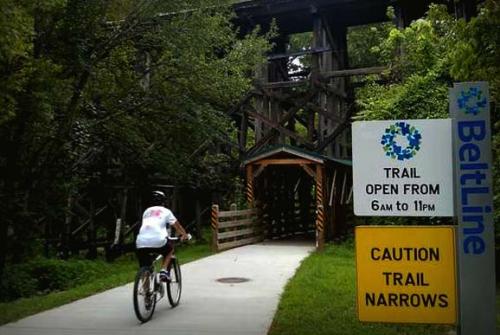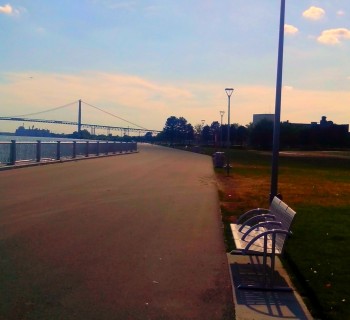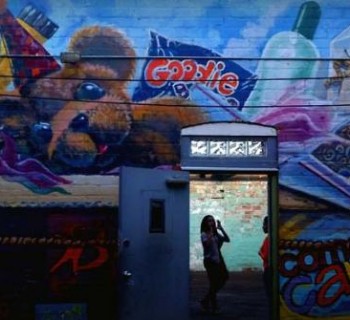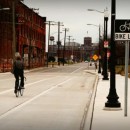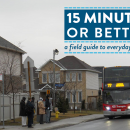Editor's Note: Tom Woiwode is the latest addition to the Mode Shift editorial family. He'll be blogging periodically in 'Musings of a Streetwalker,' sharing his perspectives on land use, community development, advocacy issues and more.
Have you heard about the Atlanta BeltLine; 22 miles of abandoned rail corridor that encircles the city? It’s being converted to trails; and the vision is exciting. It passes through 45 different neighborhoods—rich and poor—within two to four miles of downtown Atlanta.
The brainchild—a thesis topic, actually—of a graduate student at Georgia Tech in the late ‘90s, it’s been picked up by the community and the political leadership; and has been embraced as a way to transform the landscape, link the neighborhoods and change the car culture of Atlanta.
It’s intended to encourage walking, biking and create a more active engagement and connection with the community. To date, they’ve raise over $350 million in public and private funds for projects and community development.
One of the first of the projects to be completed is known as the Eastside Trail. Finished two years ago, this two-mile stretch of converted rail corridor has spawned the conversion of a 2.1 million square foot Sears distribution center into a soon-to-be-opened apartment complex with restaurants and office space.
The proprietor of an antique furniture store that abuts the Eastside Trail says that his business has increased 10-fold in the two years the trail’s been open. Five miles of trail have been completed in the past five years. And Mayor Kasim Reed would like to see the entire trail paved and streetcars added to the corridor within the next decade. A very exciting vision for Atlanta, indeed.
Did you know plans are in the works for a “BeltLine”-like opportunity in Detroit?
It’s typically referred to as the Inner Circle Greenway. Identified in a study of rail-trail opportunities within the city, completed in 2002 by the Rails-to-Trails Conservancy, it was one of 10 potential rail corridors that RTC felt could be converted to trails (the Dequindre Cut was also identified in that study).
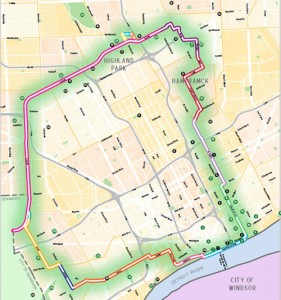 The Inner Circle Greenway is actually a series of connecting corridors that literally encircle the city, much like East and West Grand Boulevard. The key component is an approximately 10-mile abandoned chunk of rail line that travels mostly east and west, from the corners of Hamtramck and Highland Park on its east end to the west side of the city.
The Inner Circle Greenway is actually a series of connecting corridors that literally encircle the city, much like East and West Grand Boulevard. The key component is an approximately 10-mile abandoned chunk of rail line that travels mostly east and west, from the corners of Hamtramck and Highland Park on its east end to the west side of the city.
To realize the full vision of the Inner Circle, other trails are included as key components—the Dequindre Cut in the southeast corner, the Detroit RiverWalk along the riverfront, bike lanes and segments of the trail system extending north from the Dequindre Cut providing much of the eastern leg of Inner Circle.
It’s even longer than Atlanta’s BeltLine—somewhere between 26 and 30 miles, depending upon how far the trail has to meander to make its connections. It’s an incredible vision, breathtaking in its potential.
But let’s not get too far ahead of ourselves. Rail-trail conversions come with a myriad of challenges—funding, clean-up, environmental issues, etc.—not the least of which is the acquisition of the property. The stretch of Dequindre Cut that will soon be developed, often referred to as Dequindre Cut North, is a perfect example. It took almost 10 years of regular conversation with the president of the railroad that owned that stretch of property to ultimately secure an agreement to purchase the property; and that stretch of railroad corridor is only seven-tenths of a mile long.
Let’s face it, any number of things could get in the way—possibly an unsympathetic seller, maybe a prohibitive asking price, perhaps serious contamination problems, maybe some challenges in making the connections, unidentified property management or construction challenges.
The big missing link right now is an 8.3-mile section of abandoned railroad track owned by the Conrail corporation. The City of Detroit hopes to purchase the land from the company and convert it to trail. However funding has been a sticking point; estimates put the cost at about $4.5 million to buy the railroad expanse from Conrail.
That said, though, so much is happening in the development of non-motorized transportation opportunities in the city; and this—if it can be pulled off—provides the glue that binds them all together. It is incredibly exciting.
Watch Mode Shift and this space for updates as the discussion moves forward. And imagine what this could mean to the city, the region and the state.
Pretty cool, eh?!


